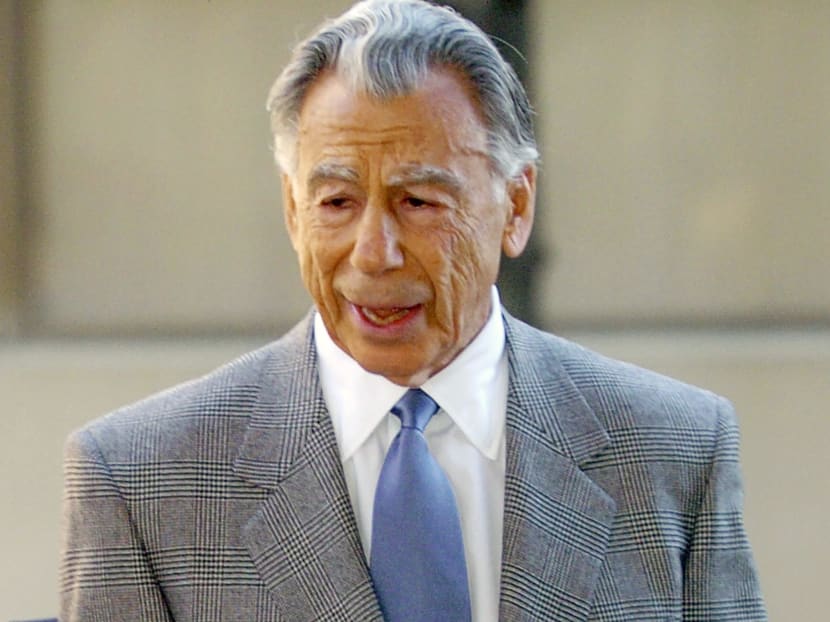How Kirk Kerkorian gambled big and changed entertainment
LOS ANGELES — Kirk Kerkorian, the three-time owner of Metro-Goldwyn-Mayer (MGM) who died Monday (June 15) at age 98, was a risk-taker who mastered the art of the deal, and fundamentally altered the gaming and entertainment industries, former colleagues and analysts say.

Kirk Kerkorian. Photo: Reuters
LOS ANGELES — Kirk Kerkorian, the three-time owner of Metro-Goldwyn-Mayer (MGM) who died Monday (June 15) at age 98, was a risk-taker who mastered the art of the deal, and fundamentally altered the gaming and entertainment industries, former colleagues and analysts say.
“He had an innate sense of what would work and what wouldn’t from a deal standpoint – and he was never afraid to gamble,” recalled Jerry Weintraub, who worked with Kerkorian four decades ago as an executive at MGM. “He had the art of it down pat.”
Weintraub remained close to Kerkorian after departing the studio and stressed that the mogul loved the movie business, despite having repeatedly sold MGM and having earned a reputation for being more interested in making a profit than making art.
“He’d watch movies in Westwood all the time,” Weintraub added. “Casablanca was his favourite.”
Kerkorian made his money in aircraft and real estate, and entered the motion picture business in 1969 when he bought MGM. Twelve years later, he added United Artists (UA) to his holdings, before selling them both to Ted Turner in 1986 for US$1.5 billion (S$2 billion). He’d go on to buy and sell MGM and UA two more times, scoring a final deal for the company in 2005.
The studio emerged from a prepackaged bankruptcy in 2011 with Spyglass Entertainment toppers Gary Barber and Roger Birnbaum taking over. Barber has remained as chairman and CEO.
“Kirk Kerkorian will be forever linked to the history and success of MGM,” said Barber in a statement. “We know that his legacy and fighting spirit will live on through all of our future endeavours. Our deepest sympathies are with his family at this time.”
Not everyone was as reverent. IndieWire’s Anne Thompson, for instance, faulted Kerkorian for repeatedly strip-mining MGM and UA before selling what was left to the highest bidder. By the time he was through, MGM and UA were no longer major studios – they were debt-laden and trying to wring out the last few dollars from their film libraries, she argued.
“Kerkorian’s true legacy is that he was the man who killed MGM and UA,” wrote Thompson.
Despite his mixed legacy, Jason E Squire, an associate professor at the USC’s School of Cinematic Arts, told Variety that Kerkorian’s strategic instincts were unmatched.
“He really was one-of-a-kind,” Squire recalled. “He was able to take leaps in entrepreneurship because he was a master at analysing the value of assets – even though he did not have a formal education. It was something ingrained in him.”
Squire also praised Kerkorian’s character, noting that the mogul remained accessible and approachable throughout his life. “He was totally unassuming about his role,” he added.
Kerkorian never abandoned his roots, claimed veteran media Hal Vogel.
“I knew Kirk,” he added. “I thought he was a brilliant, brilliant fellow who was at the heart of it humble. He was not a larger than life character or in your face all the time. He’d stop into the analyst meetings, and sit in the back of the room. If you didn’t know he owned most of the company, you’d have no idea he was important.”
“Here’s a man with very humble roots, an eighth grade drop-out, who rose to become a multibillionaire with influences on the film, entertainment, gaming and airplane industry. He did that on his own and out of his own native intelligence.”
Vogel noted that Kerkorian did miss an opportunity by not expanding MGM’s TV operations.
“On one hand you have to admire a person like this who could acquire a major league film studio with a vast library and be controlling shareholder for long periods of time,” he said. “The bad news in terms of what was happening is he could have extended MGM to broadcast and cable in a major way and that would have made it a bigger enterprise, and somehow or other he didn’t see that.”
Kerkorian’s gaze extended beyond Hollywood. He managed to succeed in Las Vegas thanks to his astute leveraging of the MGM brand – which contributed significantly to the resort city’s expansion in recent decades, according to Christina Binkley, author of Winner Takes All. At three different points, Kerkorian opened what at the time were considered the world’s largest casino-hotels – the International in 1969, the original MGM Grand in 1973, and the MGM Grand’s current Las Vegas incarnation in 1993.
“He just loved size,” said Binkley. “He liked things that were big, and he would make choices that would make his projects bigger, if not always better. He brought the idea to Las Vegas of resorts that had everything in them, like cities. The downside was there were often problems, there were hiccups. The scale was part of it, but he often left details to other people. ”
Binkley stressed that Kerkorian’s role in the growth of Las Vegas can’t be overestimated: “If you flew over the Las Vegas strip, he touched a good half or more of what is there. The city looks different than it would have if he hadn’t been there.” VARIETY.COM/REUTERS





